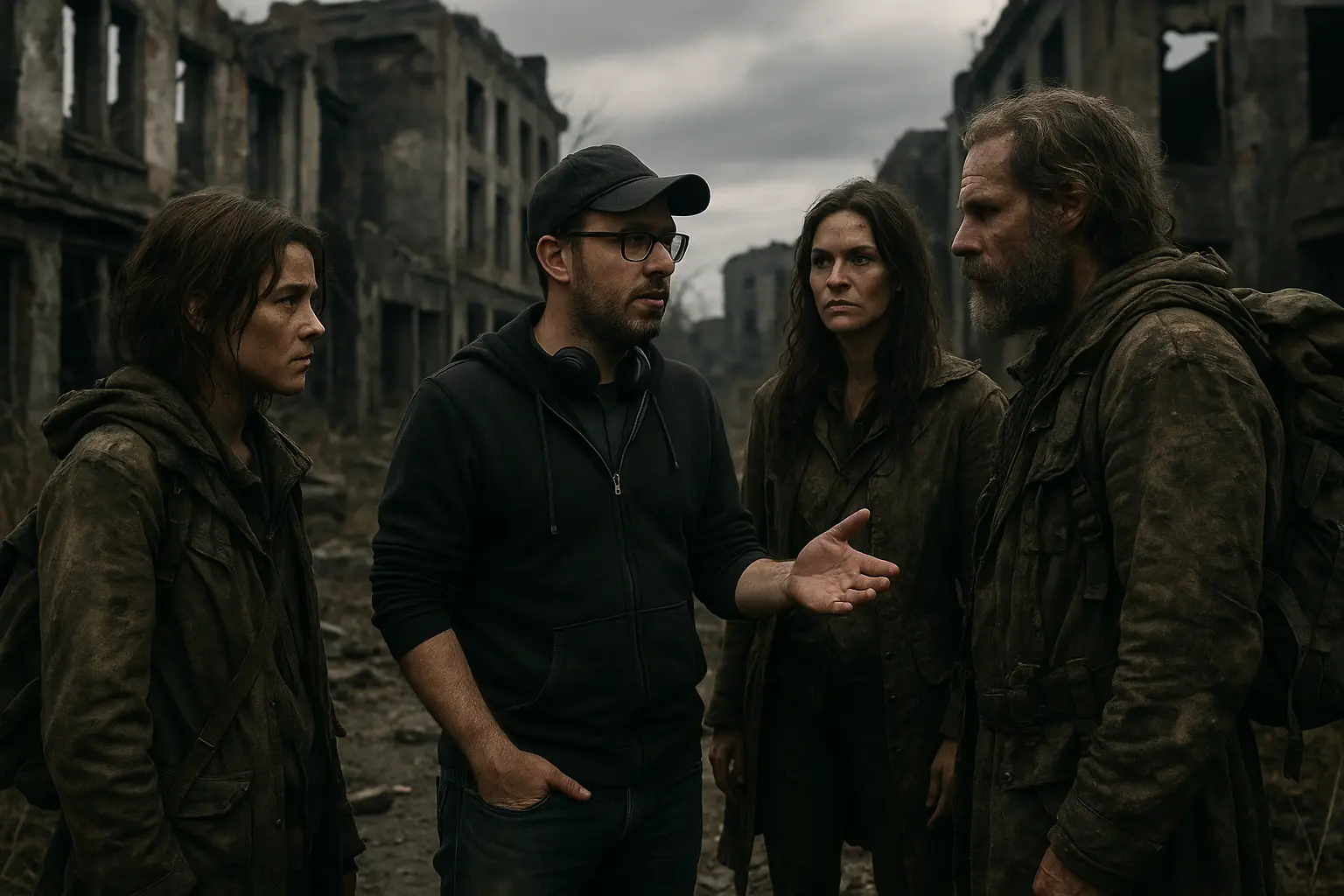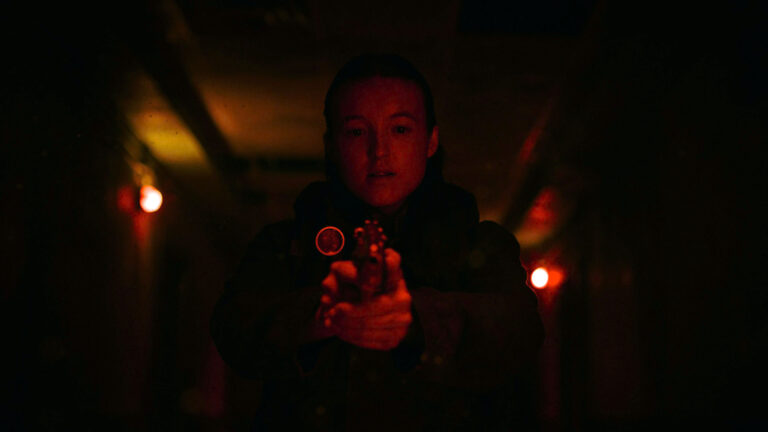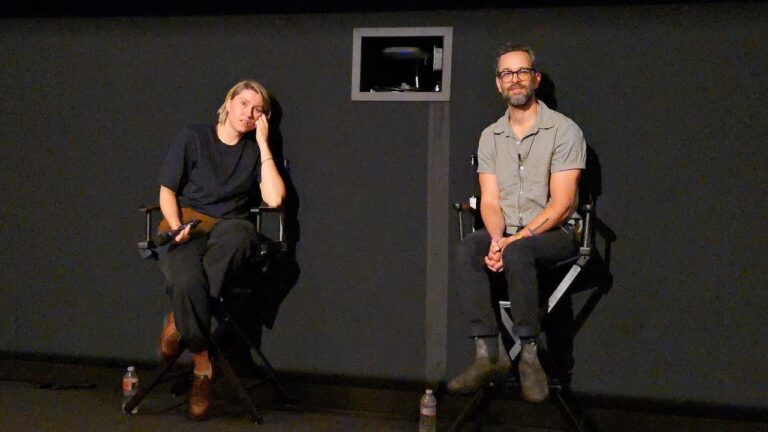Craig Mazin, folks. The man went from blowing up Chernobyl on HBO to shattering our hearts — one infected at a time — in The Last of Us. Let’s get it out there: Mazin didn’t just roll in and pick up a PlayStation controller. He dissected every click, every spore, every flame-thrower burst, and then asked, “how do I make this hurt, twice?” Because if anyone was going to drag The Last of Us onto TV and steer it safely between angry gamers and clueless newbies, it needed Mazin’s balance of brains, chutzpah, and — let’s be honest — existential dread.
From Fallout to Fungi: Mazin’s Evolution
Picture it: 2019. Chernobyl arrives on HBO and smacks people with radioactive heartbreak. Mazin’s writing there grabs five Emmys, makes nuclear meltdown gripping, and even gets science nerds swooning. But he pocketed more than just trophies. He pocketed lessons, and did he ever put them to use.
Jump to the Cordyceps side of town. Mazin said, point blank, that he wanted TLOU’s flashbacks to feel like “mini Chernobyls.” You notice it in every cold open — the Jakarta sequence, that panic-doused talk show, the way normal life crumbles under invisible threat. He brings in Chernobyl DNA: short, brutal timelines, real science, and suffocating moral weight. So, between Geiger counters and clickers, Mazin finds the same sickening tick-tick-tick of disaster. And trust me, he times it so well you forget to breathe.
The Druckmann-Mazin Duo: Like Batman and Robin, If Robin Wrote Emmy-Winning Tragedies
Every solid show needs a creative duo, and Mazin’s partnership with Neil Druckmann — creator of the original TLOU game — might take the crown. Legend says they bonded in less than half an hour, just gushing about stories and the game’s gut punches. Mazin pitched the nine-episode arc; Druckmann dropped his “protect-the-characters” law. Together, they became the ultimate adaptation tag team.
But, as you’d guess, there’s heat in that kitchen. Their interviews are full of stories about clashing over pacing. Mazin pushed for slow-burn arcs (like Kansas City’s two-episode detour); Druckmann sometimes worried it would bog things down. They duked it out, always asking: does this serve the emotion? The result? Kansas City stays long enough to matter but short enough to keep the story moving.
Insiders say their writing sessions are wild. Mazin brings the research, the spreadsheets, the Chernobyl “what-if” maps. Druckmann springs the “would Joel really say that?” trap. Eventually, they find the sweet spot. That’s true bromance, honestly.
Construction Zone: How Mazin Rebuilt Pacing for the Small Screen
Let’s talk tempo! TLOU the game thrives on long, sweaty stealth sequences. For a TV binger, though? Not so much. Mazin took those tense, drawn-out moments and distilled them to pure emotional juice. He’s told IndieWire — and basically anyone who’d listen — that action works best as punctuation, not as a paragraph.
Take the Kansas City horde, for example. Clickers storm the set, chaos explodes, but it’s over in four minutes flat. Why? Mazin prefers lingering way longer on Kathleen wrestling with loss than on how many infected get crispy. Action comes once, emotion echoes for hours.
Just like in Chernobyl, he leans into “reset the tension.” There’s fear, then release, then heartbreak, and then it just loops back again. This strategy carves out room for smaller character moments — Ellie and Joel singing, the awkward laugh after a close call, and that bittersweet morning light that makes you forget your coffee.
Fidelity vs. Freshness: Walking the Tightrope
Here’s the big question every game fan asked: would they keep things sacred, or flip the story on its head? Mazin says both. He set strict rules for himself and his writing room:
- Stick to the heart of Joel and Ellie’s journey.
- Respect the games’ best moments but don’t be a slave to them.
- Toss in Easter eggs, but never, ever demand homework from new viewers.
Some scenes — like the sniper alley stand-off — mirror the game to the frame. Others — think Bill’s Town — get a total rewrite. Why? Mazin wants those without PlayStation trophies to feel everything too.
He stresses, “Emotion, not fan service.” That’s why Joel and Ellie’s pivotal moments work whether you’ve played or not. And if you spot Ellie’s Mortal Kombat II obsession or see those Left Behind comics? Cool, but you don’t need them to get it.
The Bill and Frank Episode: A Masterclass in Creative Risk
Episode 3. We need to talk about Episode 3. Bill and Frank were a footnote in the game — Frank was a corpse, Bill barely got a hug. Mazin strolled in, raised one eyebrow, and pitched a full-life love story instead.
At first, even Druckmann blinked. But Mazin’s version — a bottle episode full of rabbits, wine, and heartbreaking hope — turned into something unforgettable. Critics freaked out, Rotten Tomatoes nearly melted (97%), and overnight viewership shot to 6.4 million. The episode nabbed WGA nominations and had Twitter sobbing for days. Mazin summed it up best: horror-without-hope is just cruelty. Now it’s a romance we’ll never recover from.
Season Two: Mazin Dials Up the Emotional Blackout
Season 2, which finally dropped in April 2025, makes bold moves early. Mazin told fans at SXSW that he was “ready to throw a little Empire Strikes Back into the mix”—meaning, let’s get darker, faster.
And boy, he delivered:
- The entire Jackson settlement storyline crams three intense game hours into a one-episode opener.
- Mazin and Druckmann push Abby’s arc way forward, letting us know her before her infamous “incident.” That means we care twice as much — and rethink everything we know — when the story hits hard.
- Dina, the fan-favorite, gets way more screen time and backstory. The writers slide emotional reveals earlier, which makes her loyalty to Ellie land like a sledgehammer.
- But the biggest reveal? They’re only halfway through adapting Part II. Mazin confirmed they’re already writing Season 3, and HBO’s loving the buzz.
Behind the Scenes: Mazin’s Secret Sauce
So what’s Mazin actually doing while the clickers run wild?
- He handpicked Bella Ramsey for Ellie, long before Druckmann watched any old Game of Thrones footage. Mazin saw the raw, oddball charm and wouldn’t budge.
- He fought for Gustavo Santaolalla’s haunting score but brought in Catherine Joy to add lush new textures and emotional weight.
- Mazin insisted on just enough gore — enough to spook, never enough to gross out grandma. Every drop mattered.
- He dragged in experts, like Dr. Charissa de Bekker and Dr. Neil Wukhov, to keep the science of deadly fungus frighteningly real.
- And if you caught Marlene using science lingo (“positive void coefficient”), thank Chernobyl. Mazin loves his inside jokes!
Audience Response: Mazin’s Gamble Pays Off
Turns out, cringing works when everyone cares. The Last of Us averaged 30.4 million viewers per episode in Season 1, according to HBO. The Season 2 premiere, despite the off-screen drama and real-world delays, clocked in at 10.6 million for its first night. That’s spicy — especially for a series with zero dragons or capes.
Awards followed, naturally. Eight Emmys for the show in 2024. Pedro Pascal grabbed Lead Actor, Bella Ramsey just missed out but scored a Golden Globe. The kicker? Mazin’s script for the Bill and Frank episode won the WGA Award, and he celebrated by eating a raw mushroom on stage. Nobody saw that coming.
The fans stick around, too. Metacritic sits at 8.9, and the show rules TikTok with 2.1 billion views on the #TheLastOfUs tag by June 2025. And the memes? They keep spreading — like cordyceps after a hot, humid summer.
Where the Road Leads Next
Mazin isn’t stopping. Word from the trades says he’s thinking about taking on Left Behind as a limited spin-off. There’s also buzz about him directing a pilot for an adaptation of A Canticle for Leibowitz. But between Pedro Pascal’s Marvel gigs and all that fan pressure, TLOU won’t disappear from HBO’s schedule anytime soon. Season 3 is already cooking, with Mazin and Druckmann vowing to stick the landing.
Taking One Last Look Back — And a Step Forward
Craig Mazin showed us how to bottle despair, suspense, and surprising hope, then pour it out episode by episode. He imports Chernobyl’s emotional radiation and mixes it with the haunted quiet of shattered America. He fights for the small moments — laughter after loss, love blooming in decay, the lie that saves you but breaks you. His partnership with Druckmann is just the sauce on top.
And as long as angry podcasts keep howling, the fan art keeps trending, and Joel and Ellie’s journey keeps us up at night, you know Mazin’s masterclass in adaptation isn’t over — he’s just loading up for the next checkpoint. Stay tuned. The road’s only going to get wilder.




